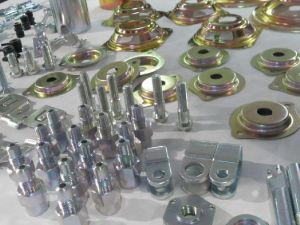
Zinc plating
Zinc plating involves the electrolytic application of zinc by immersing clean steel parts in a zinc salt solution and applying an electric current. We carry four different zinc plating products that are sure to fit your metal plating needs. They include: An Alkaline non-cyanide zinc plating, Bright Acid chloride zinc plating, Zinc-nickel alloy plating Cyanide zinc plating Our zinc plating process is suitable for rack or barrel plating and large volume batches. Acid Chloride Zinc A mixed ammonium/potassium chloride bright zinc plating process It produces brilliant, level and ductile deposits even on difficult substrates such as cast iron, heat treated and carbonitrited steel. The water soluble brightener goes into solution much more readily than a solvent based brightener. A bright chloride zinc plating solution.It has the same inherent advantages and benefits as but uses a different carrier component. SMF is an expert metal finishing and metal plating company, and is also a member of ASTM International. For more information about ASTM International,click here.
...more
tin plating
Color is gray white in plated condition, had very high luster in fused condition. Soft, but is very ductile. Corrosion resistance is good. (Coated items should meet 24 hour 5% salt spray requirement.) Solder ability is excellent. Tin is not good for low temperature applications (changes structure and loses adhesion when exposed to temperatures below -40 degrees C). If a bright finish is desired to be used in lieu of fused tin, specify Bright Tin plate. Thickness can exceed that of fused tin and in deposit shows excellent corrosion resistance and solder ability. Type I: Electrodeposited .0001 – .00025”: Flash for solderin.0002 – .0004”: to prevent galling and seizing .0003” min: Where corrosion resistance is important.0002 – .0006”: To prevent formation of case during nit-riding. Color is gray white in plated condition, had very high luster in fused condition. Soft, but is very ductile. Corrosion resistance is good. (Coated items should meet 24 hour 5% salt spray requirement.) Solder ability is excellent. Tin is not good for low temperature applications (changes structure and loses adhesion when exposed to temperatures below -40 degrees C). If a bright finish is desired to be used in lieu of fused tin, specify Bright Tin plate. Thickness can exceed that of fused tin and in deposit shows excellent corrosion resistance and solder ability.
...more
Silver Plating
Silver plating offers the highest electrical conductivity of all metals. It is not a precious metal and will oxidize rapidly. Silver plating is best suited for engineering purposes for solderable surfaces, electrical contact characteristics, high electrical and thermal conductivity, thermocompression bonding, wear resistance of load-bearing surfaces, and spectral reflectivity electrical applications, good corrosion resistance, good solderability, and other applications. Silver Plating Specification : Specification: Mil-QQ-S-365 Silver Plating, Electrodeposited Type I Silver Plating - Matte Type II Silver Plating - Semi-Bright Type III Silver Plating - Bright Silver Plating - Grades : With supplementary tarnish-resistant treatment. Without supplementary tarnish-resistant treatment Silver Plating - Tarnish-Resistance : Several options are available as supplementary coating for increasing tarnish resistance. Depending on solderability, or subsequent finishing steps such as painting or powder coating, we will recommend specific tarnish resistant coatings.
...more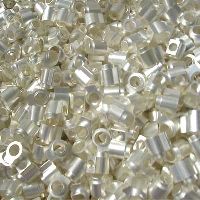
Silver Electroplating
Silver plating offers the highest electrical conductivity of all metals. It is not a precious metal and will oxidize rapidly. Silver plating is best suited for engineering purposes for solderable surfaces, electrical contact characteristics, high electrical and thermal conductivity, thermocompression bonding, wear resistance of load-bearing surfaces, and spectral reflectivity electrical applications, good corrosion resistance, good solderability, and other applications.With supplementary tarnish-resistant treatment.
...more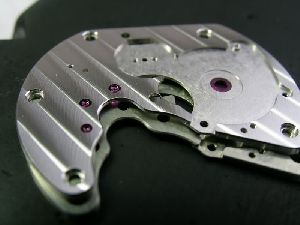
rhodium plating
Rhodium is white in color and is a precious metal, meaning non-oxidizing. Rhodium is a member of the Platinum Group of Metals. The Platinum Group of Metals is a group of six metals which include platinum, rhodium, palladium ruthenium, osmium, and iridium. These six metals all share some common physical properties. They have high melting points, are very dense, are very hard, and are very resistant to corrosion. Rhodium is the hardest of the PGM’s. Its’ hardness is about 800. Compare that to cobalt hardened gold at 200 knoop,14k ElectricGold at 400 knoop and at 400 knoop. Rhodium is the hardest, most wear resistant metal that we plate at Professional Plating. In addition to its’ hardness, rhodium is extremely resistant to corrosion. Rhodium is an excellent choice where contact with corrosive gases or other high corrosion environments will be encountered. Remember also that as the operating environment temperature increases, the corrosion rate will also increase. So in high temperature applications, rhodium will provide a longer life cycle, than, for example, gold will. Rhodium will reliably operate beyond 1000F. Rhodium is an extremely bright white metal. It is much whiter than palladium and platinum. For this reason and because of its’ extreme hardness, rhodium is very commonly used as an electroplated surface for fine jewelry. Rhodium plated product is well suited for such applications as sliding electrical contacts that require protection from sliding contact wear or galling. Also, because of its’ high temperature tolerance to oxidation, rhodium is an extremely good choice for high voltage/high amperage electrical contacts where contact arcing would otherwise cause the formation of highly electrically resistive oxide formations on the contact surface.
...more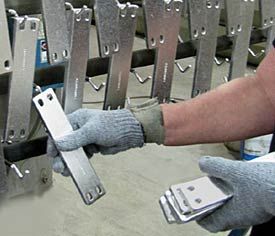
lead plating
Suresh metal Finishers Company provides industry-leading precision lead plating services to MIL-L-13808. Our expertise in providing technical barrel, rack and vibratory lead plating process is currently employed in numerous industries including the defense, railway, aerospace, bearing, fire-protection and battery sectors.Suresh metal Finishers lead plating services are employed for highly corrosive applications due to the outstanding performance of lead in corrosive environments especially when dealing with strong mineral acids such as sulfuric acid. Lead also has outstanding solderability making it ideal for use in critical electrical and electronic applications. Suresh metal Finishers also specializes in demanding plate-to-gauge lead plating services for bearing applications in the defense, aerospace and railway industries. Our dedicated Quality Control department provides prelate, in-process and post-plate dimensional and RMS inspections of inner and outer bearing surfaces to ensure dimensional and surface finish requirements are met. Heavy build lead plating services have been provided up to 0.020 inches in thickness per side. Lead Plating Services – Lead Properties Lead is an extremely soft, malleable metal that has the highest atomic number of all the stable elements. When freshly abraded lead can have a bluish-white color but it readily oxidizes to a dull gray color when exposed to oxygen-bearing environments. It is this thin oxide layer that protects the basis lead from further oxidation and lends it’s extreme resistance to hydrochloric and sulfuric acids. lends it’s extreme resistance to hydrochloric and sulfuric acids.
...more
gold electroplating
Gold is unique with its yellow color. Also, gold is a precious metal, which means that it will not oxidize in air, so its electrical conductivity stays uniform over long periods of time. It is ideally suited for gold electroplating applications. Gold plating offers good corrosion resistance, good solderability, and when alloyed with cobalt, it has very good wear resistance. Gold is commonly used in electrical switch contacts, connector pins and barrels, and other applications where intermittent electrical contact occurs.
...more
Electroplating Barrels
We use the phrase "barrel plating" in a general way to refer to a wide variety of methods for electroplating small parts in large groups. While barrels are a mainstay in our electroplating process, we go several steps further. Barrel plating is our strength. We have developed several proprietary methods of electroplating small parts in large groups which we refer to as "barrel plating" but do not necessarily use anything shaped like a barrel.The wide variety of part shapes that our customers bring to us, each with their own unique handling requirements, has driven the need to innovate our electroplating techniques. Barrel plating is a very productive method of electroplating.
...more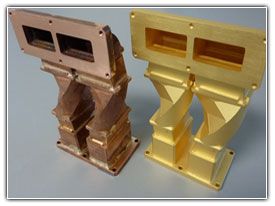
electroless plating
Electroless means that the process used to plate the gold onto a surface is not the traditional electroplating cell having electrodes and an external power supply. Electroless gold is deposited from a solution purely as the result of the reaction of chemicals in the bath. The electroless plating bath is comprised of several of the same items found in an electrolytic gold plating bath, but it also includes chemicals (reducing agents) to provide electrons for the reaction and other chemicals (chelating agents and stabilizers) to control the reaction so that it can be predictable and controllable as a manufacturing process.
...more
Electroless Nickel Plating
Similar to stainless steel in color, Plates uniformly in recesses and cavities (does not build up on edges). Corrosion resistance is good for coatings over .001 thicknesses. Electro less Nickel is used extensively in salvage of miss-machined parts. Also for inside dimensions and irregular shapes (where assembly tolerances need uniformity provided by Electro less process).
...more
Electroless Gold Plating
Electroless gold is deposited from a solution purely as the result of the reaction of chemicals in the bath. The electroless plating bath is comprised of several of the same items found in an electrolytic gold plating bath, but it also includes chemicals (reducing agents) to provide electrons for the reaction and other chemicals (chelating agents and stabilizers) to control the reaction so that it can be predictable and controllable as a manufacturing process. Why Does It Matter Which Process is Used to Plate?Is the Deposit the Same?To plate a part using an electrolytic process, every surface to be plated must be connected electrically so that it can act as the cathode in the plating cell. This becomes difficult for many products but especially for electronic circuits that generally need to have electrically isolated surfaces to be functional. Over the course of the development of the electronics industry it has become common practice to design in connections to tie different surface metal patterns together just for plating and then to remove these connections after plating. The manufacturing inefficiencies of this are obvious but a greater problem is the restriction this places on the final performance and circuit density of the component. Using electroless gold plating, circuits can be designed and fabricated in their final configuration. This saves the manufacturer several steps but more importantly it allows the circuit design to place primary consideration on optimum circuit performance and minimum circuit size. The electroless gold deposit is identical to an electrolytic pure gold deposit (i.e., Mil-G-45204 C Type III or ASTM B488 Type 1 hardness code A) in essentially every way; thickness, purity, hardness, grain size, density and color. The primary difference from an electrolytic gold deposit is it's second distinct advantage... improved thickness distribution. Electrolytic plating creates deposits that have thickness variations resulting primarily from the shape of the electrical field between the cathode surfaces and the anode. These deposits are thicker on corners and edges and surfaces where the distance to the anode is shortest. They are also thinner in the middle of surfaces, inside of holes and on surfaces facing away from the anode. Electroless plating completely eliminates this source of variation. Electroless gold plated deposits are uniform in thickness around corners, on both sides of a part, even on the inside walls of small holes that may be very deep.
...more
Chromate Plating
1.Materials qualified produce coatings that range in color from clear to iridescent yellow or brown. Inspection difficulties may arise with clear coatings because visual inspection does not reveal the presence of a coating. 2. Class 1A For maximum protection from corrosion, for surfaces to be painted or left unpainted.3. Class 1A chemical conversion coatings are intended to provide corrosion prevention when left unpainted and to improve adhesion of paint finish systems to aluminum and aluminum alloys may be used for all surface treatments of tanks, tubing's and component structures where interior paint finishes are not required. Repair of mechanically damaged areas of anodic coatings conforming to MIL-A-8625 will provide effective means of reestablishing corrosion resistance but will not restore abrasion resistance of the anodic coating. Class 3: Class 3 chemical coatings are intended as a corrosion preventive film from electrical and electronic applications where low resistance contacts are required.
...more
cadmium plating
This specification covers the requirements for electrodeposited cadmium coatings on products of iron, steel, and other metals. Cadmium coatings are used for corrosion resistance and corrosion prevention The as deposited coating (Type I) is useful for the lowest cost protection in a mild or noncorrosive environment where early formation of white corrosion products is not detrimental or harmful to the function of a component. The prime purpose of the supplementary chromate finishes (Types II and III) on the electroplated cadmium is to increase corrosion resistance.Electrodeposited cadmium coatings shall be classified on the basis of thickness as Class 25, 12, 8, and 5. The coating shall be essentially pure cadmium produced by electrodeposition usually from an alkaline cyanide solution. The basis metal shall be subjected to such cleaning procedures as necessary to ensure a surface satisfactory for subsequent electroplating. Cadmium shall be deposited directly on the basis metal part without an undercoat of another metal except when the part is either stainless steel or aluminum and its alloys. The plating shall be applied after all basis metal heat treatments and mechanical operations. The thickness of the coating everywhere on the significant surface shall conform to the requirements of the specified class. The cadmium coating shall be sufficiently adherent to the basis metal to pass the tests. The supplementary Type II chromate film shall be adherent, nonpowdery, and abrasion resistant. The thickness of electrodeposited cadmium coatings shall be determined by the applicable test methods.
...more
cadmium electroplating
Cadmium shall be deposited directly on the basis metal part without an undercoat of another metal except when the part is either stainless steel or aluminum and its alloys. The plating shall be applied after all basis metal heat treatments and mechanical operations. The thickness of the coating everywhere on the significant surface shall conform to the requirements of the specified class. The cadmium coating shall be sufficiently adherent to the basis metal to pass the tests. The supplementary Type II chromate film shall be adherent, nonpowdery, and abrasion resistant. The thickness of electrodeposited cadmium coatings shall be determined by the applicable test methods.
...more
Nickel plating
Nickel can be deposited soft or hard-dull or bright, depending on process used and conditions employed in plating. Thus, hardness can range from 150–500 Vickers. Can be similar to stainless steel in color, or can be dull gray or light gray (almost white) color. Corrosion resistance is a function of thickness. Class 1A: For corrosion protection Grade A: .0016” Min. thickness Grade B: .0012” Min. thickness Grade C: .0010” Min. thickness Grade D: .0008” Min. thickness Grade E: .0006” Min. thickness Grade F: .0004” Min. thickness Grade G: .0002” Min. thickness Class 2: For engineering applications Electro less Nickel plating, Nickel is generally used as a semi-bright white corrosion resistant finish. Electro less nickel plates with unusually uniform dimensional build up on parts so that you don’t get thick regions at outside corners and thin regions at inside corners and in cavities. Also, E-Nickel is hard and offers good wear resistance. The corrosion resistance improves with increasing phosphorous content. We offer both mid-phosphorus and high-phosphorus E-Nickel solutions. E-Nickel (Plating is) plates very well to many types of aluminum and therefore serves as an excellent base for precious metals, which generally don’t adhere well to aluminum. Mil Spec C–26074
...more
gold plating
MIL-G-45204 Gold Plating, Electrodeposited Type I 99.7 % gold minimum; hardness grade A, B, or C. Gold plating used for general-purpose, high-reliability electrical contacts, solderability, and wire wrap connections. Type II 99.0 % gold minimum; hardness grade B, C, or D. A general-purpose, wear-resistant gold. It will not withstand high-temperature applications because the hardening agents in the gold plating will oxidize. Type III 99.9 % gold minimum; hardness grade A only. Gold plating for semiconductor components, nuclear engineering, thermocompression bonding, and high-temperature application. Gold Plating & Gold Electroplating - purity and coating thickness: Co-deposited impurities can make soldering more difficult, and for this reason high purity gold plating is preferred. Soldering requirements are best achieved when gold electroplating coatings range between 0.00005 and 0.0001 inch (50 and 100 micro inches) thickness. Gold Plating & Gold Electroplating - Hardness Grades: 1. 90 knoop, maximum2. 91-129 knoop, inclusive3. 130-200 knoop, inclusive4. 201 knoop, minimum Gold over silver is not recommended for electronics hardware: Gold Plating - Underplate RecommendationsGold Electroplating - When gold is applied to a copper rich surface such as brass, bronze, or beryllium copper, metal ions from these base metals will diffuse into the gold layer and degrade its hardness and non-oxidizing properties. An antidiffusion underplate such as nickel (electroless or sulfamate) should be applied to prevent this. We recommend electroless nickel under gold where part flexure of deformation is not expected and a bight finish is desirable. Where part flexure or deformation is expected, we recommend sulfamate nickel as the underplate because of its higher ducility.
...moreBe first to Rate
Rate ThisOpening Hours